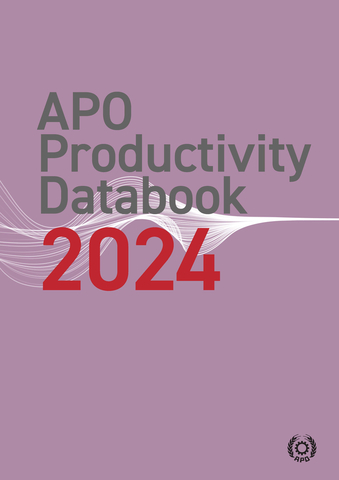
TOKYO–(BUSINESS WIRE)–Oct. 23, 2024
The Asian Productivity Organization (APO) released the 17th edition of the APO Productivity Databook, offering detailed analyses of economic growth and productivity from 1970 to 2022, with projections through 2035. It covers 31 Asian economies, including 21 APO members and key global reference economies like Australia, the EU, and the USA.
This press release features multimedia. View the full release here: https://www.businesswire.com/news/home/20241016134729/en/

(Graphic: Business Wire)
Based on the APO Productivity Database, which integrates the Asia QALI Database for quality-adjusted labor inputs and incorporates data on mineral and energy resources, the databook is an essential resource for policymakers, business leaders, and researchers to understand the region’s economic landscape and support data-driven decision-making. Its rigorous methodology ensures reliability, helping stakeholders identify growth opportunities and challenges for strategic economic planning.
Highlights of the APO Productivity Databook 2024
- Detailed productivity accounts of APO members compared with regional references, highlighting contributions of capital, labor inputs, and total factor productivity (TFP) in driving economic growth.
- Rebounds in key sectors, with member economies like the ROC, ROK, Singapore, and Vietnam showing resilience amid COVID-19 disruptions.
- Economic growth and productivity trends: Between 1970 and 2022, Asia experienced transformative productivity growth, driven by economies such as the ROC, India, and Japan which made significant contributions to TFP growth during this period.
- Sectoral performance: Some APO members demonstrated robust growth in manufacturing, while agriculture remained vital, with productivity gains increasingly driven by investments in capital and technology.
The APO Productivity Databook 2024 is available in both digital and print formats and can be accessed and downloaded for free from the link below.
https://doi.org/10.61145/SQVZ2821.
The APO Productivity Database 2024, an online tool that provides productivity data on 31 Asian countries and benchmarks from multiple economic groups worldwide, is also updated in the link below.
https://www.apo-tokyo.org/productivitydatabook/.
About the APO
The Asian Productivity Organization (APO) is a regional intergovernmental organization dedicated to improving productivity in the Asia-Pacific region through mutual cooperation. It is nonpolitical, nonprofit, and nondiscriminatory. Established in 1961 with eight founding members, the APO currently comprises 21 member economies: Bangladesh; Cambodia; the Republic of China; Fiji; Hong Kong; India; Indonesia; Islamic Republic of Iran; Japan; the Republic of Korea; Lao PDR; Malaysia; Mongolia; Nepal; Pakistan; the Philippines; Singapore; Sri Lanka; Thailand; Turkiye; and Vietnam.
The APO is shaping the future of the region by fostering the socioeconomic development of its members through national policy advisory services, acting as a think tank, institutional capacity-building initiatives, and knowledge sharing to increase productivity.
View source version on businesswire.com: https://www.businesswire.com/news/home/20241016134729/en/
Contact:
For details contact:
Digital Information Unit, APO: pr@apo-tokyo.org; Website: https://www.apo-tokyo.org.

















